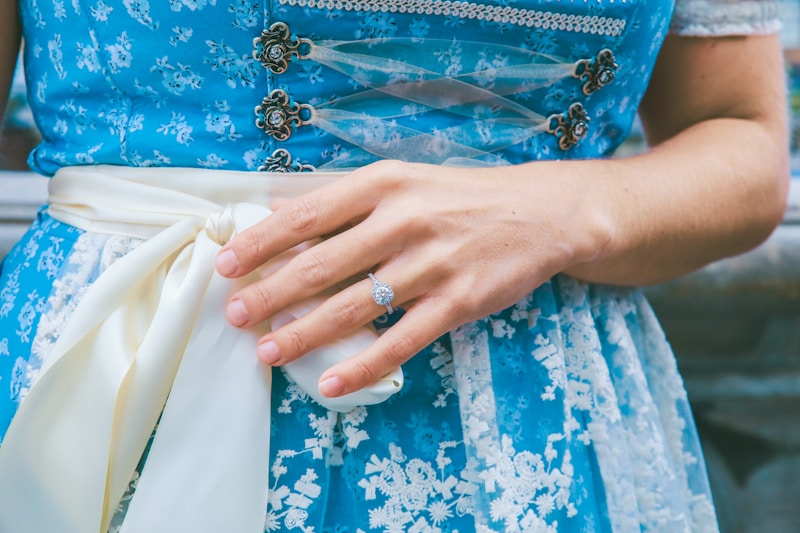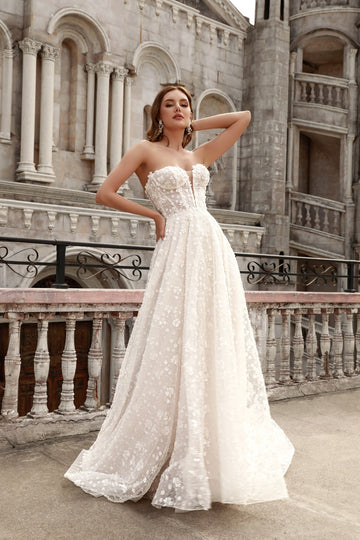Timeless Traditions in Bridal Fashion: A Journey Through Elegance
Timeless Traditions in Bridal Fashion: A Journey Through Elegance
Bridal fashion is a beautiful amalgamation of cultures, history, and timeless traditions that have evolved over centuries. As couples prepare to say their ‘I do’s,’ they often look to various traditions to inspire their wedding attire. In this article, we will explore the enduring customs in bridal fashion, the significance of these traditions, and how they shape modern bridal wear across the globe.
The Essence of Bridal Fashion Traditions
Bridal fashion is not merely about the dress; it encapsulates deep-rooted customs that vary significantly between cultures. These traditions influence color choices, fabric selections, and design specifics. Let’s delve into some of the most notable bridal traditions from around the world.
| Culture | Tradition | Color | Style |
| Western | White Wedding Dress | White | Elegant, flowy |
| Chinese | Wedding Qun Kwa | Red | Embroidered, vibrant |
| Indian | Lehenga Choli | Varied (often red or gold) | Intricate patterns, lavish |
| Japanese | Shiro-Muku Kimono | White | Traditional, simple |
The Western Influence: The White Wedding Dress
The tradition of wearing white on wedding days can be traced back to Queen Victoria’s marriage to Prince Albert in 1840. This iconic choice made white a fashionable color for brides across the Western world. Since then, variations of the white wedding dress have become synonymous with purity, innocence, and new beginnings. Modern brides continue to draw inspiration from this tradition, often opting for intricately designed gowns that feature lace, silk, and beading, showcasing elegance and sophistication.

The Vibrancy of Chinese Bridal Attire
In contrast to Western traditions, Chinese bridal fashion eschews white in favor of vibrant red, a color symbolic of good luck, happiness, and prosperity. The traditional Qun Kwa dress is heavily embroidered with auspicious symbols such as dragons and phoenixes, which are believed to bring fortune. The outfit is usually complemented by accessories like golden hairpins and traditional jewelry, creating a stunning, vibrant look that captivates wedding guests.
Indian Bridal Fashion: A Feast for the Eyes
Indian weddings are renowned for their grandeur and elaborate rituals. The bridal attire, often consisting of a lehenga choli, is adorned with intricate embroidery, sequins, and rich fabrics such as silk or brocade. Colors vary widely, but red is a prefered choice, representing love and fertility. Besides the lehenga, brides often wear heavy jewelry that adds to their regal appearance. This tradition not only enhances the bride's beauty but also connects her to her cultural heritage, making her feel part of an age-old custom.
Japanese Elegance: The Shiro-Muku Kimono
The Japanese bridal tradition is both simple and profound, with the Shiro-Muku kimono being a popular choice. This pristine white outfit symbolizes purity and a fresh start in marriage. While the bride may wear white for the ceremony, she often changes into a colorful kimono for the reception, signifying her new life ahead. The elegance of the kimono, combined with beautifully styled hair and minimalistic makeup, creates a serene and graceful bridal look.
The Importance of Cultural Significance
Understanding the significance of these timeless bridal traditions allows modern couples to infuse a sense of personal meaning into their weddings. Many brides today are choosing to incorporate elements from various cultures, blending traditions to create a unique wedding experience that honors both their heritage and their individuality. This cultural harmony can be seen in mixed bridal wear that combines styles, colors, and fabrics from different backgrounds, showcasing the beauty of diversity.
The Evolution of Bridal Trends: From Traditional to Modern
As time progresses, bridal fashion continues to evolve while retaining core traditional elements. Contemporary styles often reflect personal tastes rather than strictly following generational customs. For instance, some modern brides might choose to wear non-white dresses, emphasizing their personality over tradition. Others may opt for minimalist designs, champagnes, or even bold colors that challenge societal norms. Nevertheless, the influence of timeless traditions remains profound, often informing the design choices of today’s bridal wear.
Bridal Fashion Trends to Watch
As bridal fashion evolves, there are several key trends that both brides and wedding planners should keep an eye on:
- Sustainable Fashion: Eco-friendly materials and the rise of second-hand Wedding dresses are gaining popularity, appealing to environmentally conscious couples.
- Mix and Match: Brides are increasingly choosing separates over traditional gowns, combining tops and skirts for a personal touch.
- Vintage Styles: Retro designs from past decades have emerged as a favorite, evoking nostalgia while offering a unique twist.
- Colorful Accents: Beyond classic whites and creams, bold colors are making a statement, with brides embracing vivid hues for their gowns or featuring colorful accessories instead.
Conclusion: Cherishing Timelessness in a Modern World
Timeless traditions in bridal fashion serve not only as a connection to history but also as a meaningful way for brides and grooms to express their love stories through attire. As trends evolve, the charm of cultural heritage remains a steadfast element in the wedding industry. Whether it’s a traditional white gown, a vibrant red Qun Kwa, a beautifully embroidered lehenga, or a serene kimono, each outfit tells a powerful story.
For couples planning their wedding, it’s essential to consider incorporating these traditions into their bridal fashion choices, aiming for a balance between personal expression and honoring cultural roots. Ultimately, no matter the chosen style, the love shared on that significant day is what truly makes the bridal fashion timeless.
Recommendation: When selecting bridal attire, ensure to reflect on your cultural heritage while also embracing your personal style. The blend of both can result in a unique and memorable wedding that pays homage to the past while looking toward the future.
